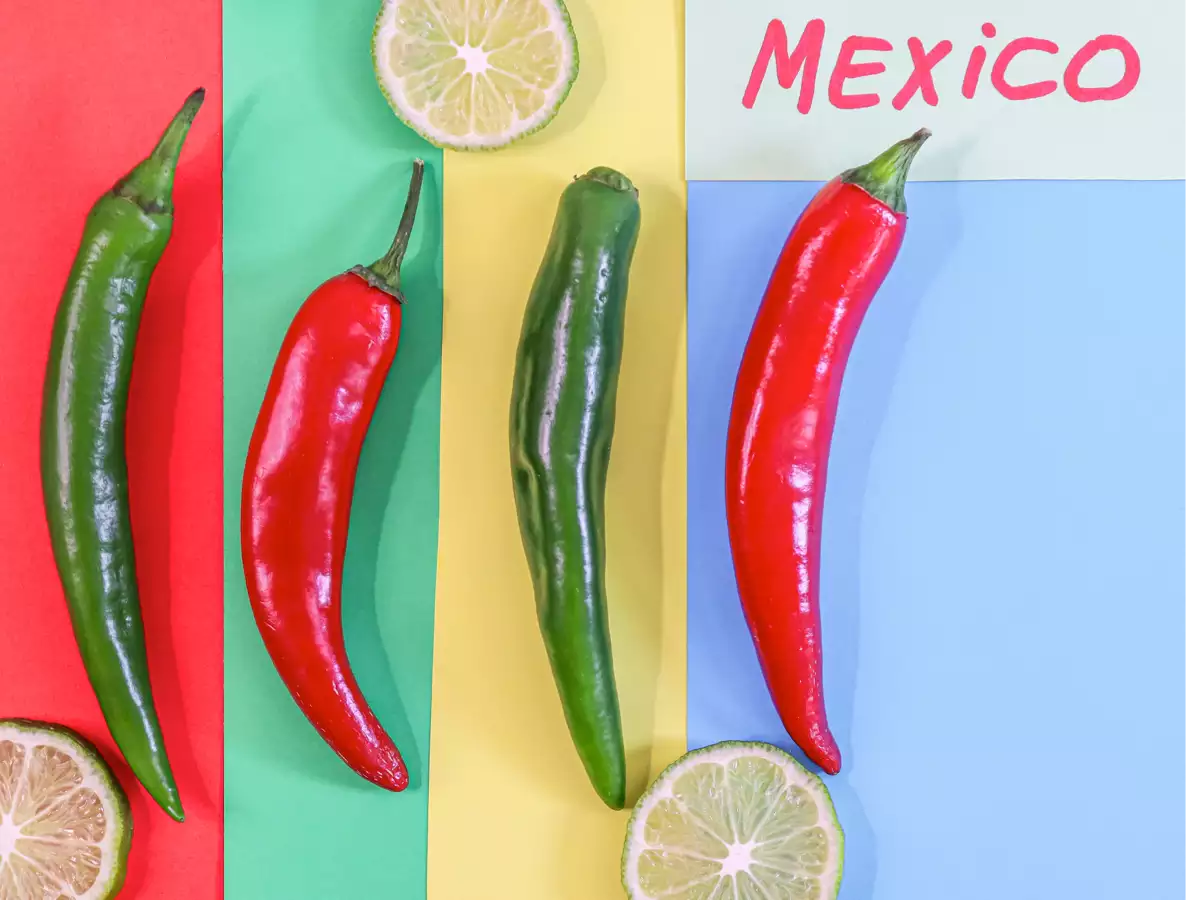22 Jul, 2024

When most people think of Mexican cuisine, one element immediately comes to mind: heat. But as our head chef Miguel Ortiz will tell you, reducing Mexican chilies to mere spiciness misses the extraordinary depth and complexity these ingredients bring to the table.
“Chilies are to Mexican cooking what wine is to French cuisine,” Miguel explains as he arranges a colorful array of peppers in Gringos’ kitchen. “Each variety has its own personality—its own terroir, acidity, sweetness, and aromatic qualities. Heat is just one dimension of their character.”
Over the past year, our “From Mexico to London” chili program has expanded dramatically. We now grow several varieties in partnership with local urban farms, import special dried chilies directly from Mexico, and feature over a dozen different peppers throughout our menu. Today, we’re offering a peek into this vibrant world of flavor through Chef Miguel’s expert perspective.
The first misconception Miguel wants to correct is that fresh and dried versions of the same chili are interchangeable.
“When a chili is dried, it becomes an entirely new ingredient,” he says, holding up a fresh poblano in one hand and its dried counterpart, an ancho, in the other. “The fresh poblano has bright, green vegetal notes. But dried as an ancho, it develops rich, raisin-like sweetness with hints of chocolate and tobacco. I use them for completely different applications.”
This transformation explains why authentic Mexican recipes often specifically call for dried chilies, even when fresh might seem more convenient. It’s not about preservation—it’s about the distinct flavor profile that only develops through the drying process.
As Miguel guides us through the chilies featured on our menu, he explains the unique characteristics of each and how they’re best utilized:
Jalapeño: The gateway chili for many, jalapeños offer moderate heat and bright, crisp flavor. “We smoke them to make our signature jalapeño poppers, where the subtle heat balances perfectly with cream cheese and bacon,” Miguel notes.
Serrano: Smaller and spicier than jalapeños, serranos have a clean, sharp heat and grassy flavor. “These are perfect for our tableside guacamole and fresh salsas where that direct, punchy heat cuts through rich avocado.”
Habanero: These small, lantern-shaped chilies pack serious heat alongside distinctive fruity notes. “We use them very sparingly, mainly in our habanero-mango hot sauce where the fruit complements their natural tropical flavor.”
Poblano: Large, mild green chilies with an earthy complexity. “These are perfect for chiles rellenos—stuffed, battered and fried. Their thick walls hold up to roasting, and their mild heat won’t overwhelm the filling.”
Ancho: The dried version of poblano peppers, with rich, fruity sweetness and mild heat. “These form the base of many of our moles and sauces, providing depth without overwhelming spiciness.”
Guajillo: Thin-walled dried chilies with a tangy, berry-like flavor and moderate heat. “These bring fantastic color and brightness to our adobo marinade for smoked chicken.”
Chipotle: Smoke-dried jalapeños with an intense smoky flavor and moderate heat. “These are perfect in our barbecue sauce, creating a bridge between traditional Mexican flavors and Texas smoking techniques.”
Árbol: Slender, bright red chilies with significant heat and a clean, straightforward flavor. “We use these in our salsa roja where their vibrant color and direct heat create the perfect taco topping.”
Miguel emphasizes that using chilies effectively is about far more than heat level—it’s about understanding how they interact with other flavors.
“Take our brisket mole,” he explains. “We use four different dried chilies: anchos for depth and sweetness, guajillos for brightness, chipotles for smoke, and a touch of árbol for heat. None of them is the star, but together they create something transcendent.”
This layering approach is evident throughout our menu, where chilies aren’t just heat sources but complex ingredients that provide acidity, sweetness, earthiness, or fruity notes alongside their spiciness.
For those concerned about spice levels, Miguel offers some perspective: “Authentic Mexican cuisine isn’t about blowing people’s heads off with heat. It’s about balance.”
This philosophy guides our approach at Gringos, where we carefully calibrate spice levels and always offer options:
“The goal is never to challenge someone with heat, but to introduce them to new flavors,” Miguel insists. “We want everyone to leave having discovered something delicious, not having survived an endurance test.”
One of the most exciting developments in our chili program is our partnership with Root City Farm in South London, where we now grow several Mexican chili varieties that were previously unavailable fresh in the UK.
“Having access to fresh chili varieties beyond the basic supermarket options has transformed our menu,” Miguel says with evident excitement. “We’re growing chilies like Hungarian wax peppers, padróns, and even fresh poblanos right here in London.”
This program allows us to feature truly seasonal chili dishes, like our current summer special of blistered shishito peppers with lime salt—a dish that depends on the particular character of just-picked peppers.
For customers inspired to explore Mexican chilies in their own kitchens, Miguel offers some advice:
“Most importantly,” he adds, “remember that Mexican cuisine has had centuries to perfect these flavor combinations. Trust the traditional pairings—there’s wisdom in them.”
Throughout August, we’re offering a special “Tour of Mexican Heat” tasting menu featuring dishes that highlight different chili varieties, from mild to wild. Each course is paired with accompanying drinks selected to complement the specific chili’s character.
Whether you’re a spice enthusiast or just beginning to explore beyond mild salsa, we invite you to join us in appreciating these remarkable ingredients that have defined Mexican cuisine for centuries.
After all, as the Mexican saying goes: “La vida es como el chile, picante pero sabrosa”—Life is like a chili pepper, spicy but flavorful.